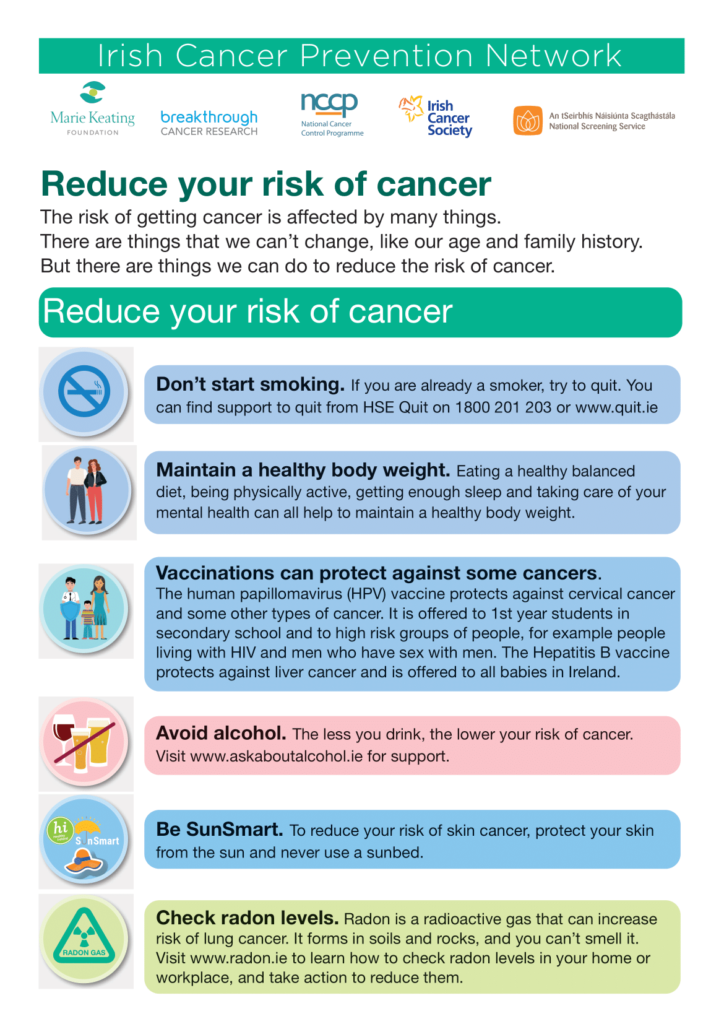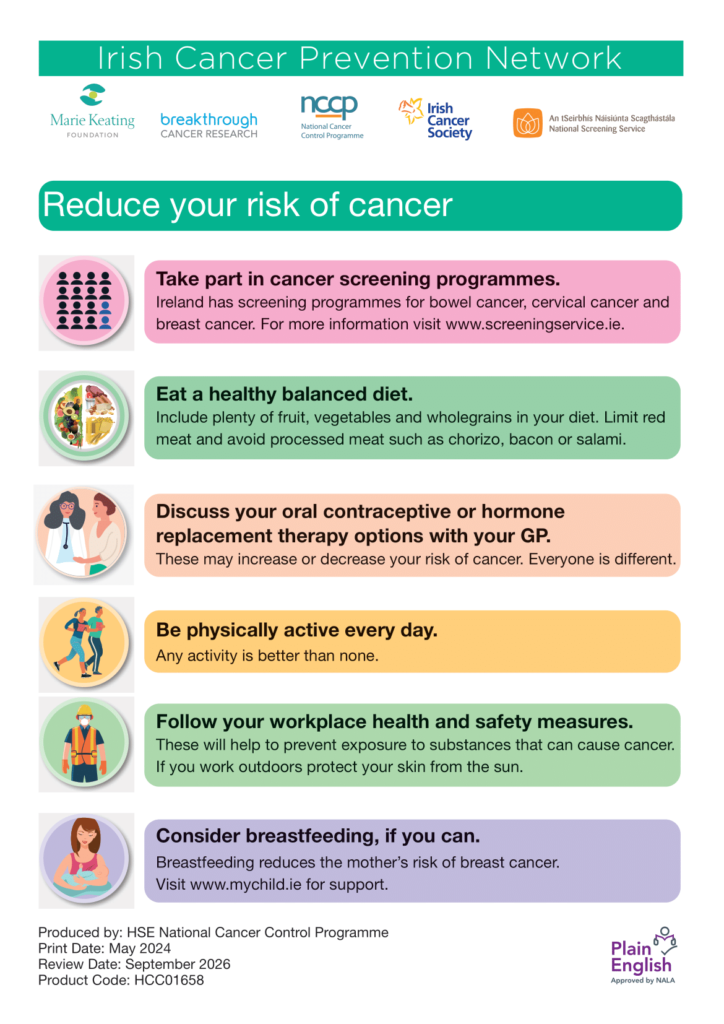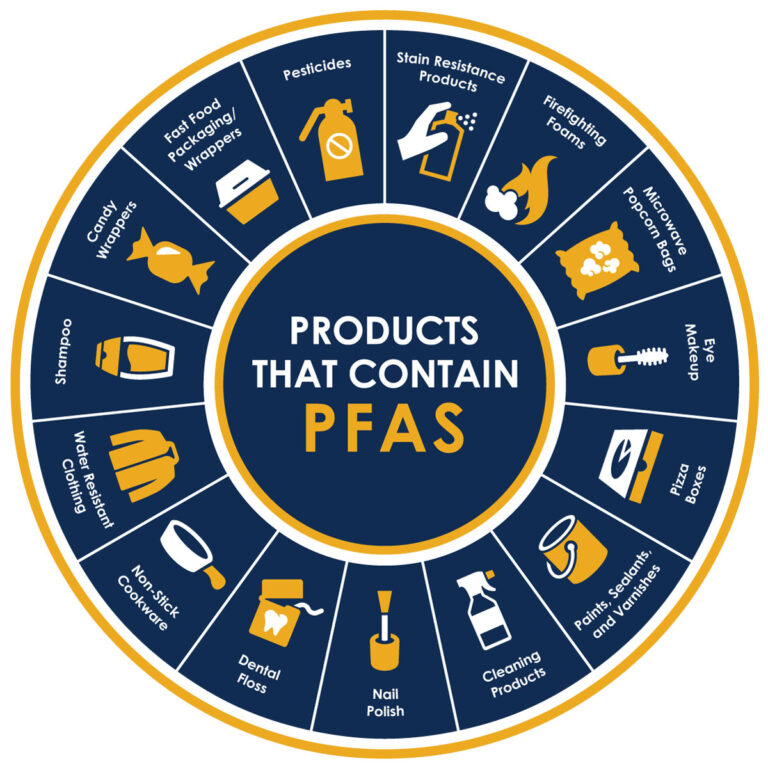Reducing the risk of cancer is one of the many goals of the Femmy O Foundation. Research has shown that the risk of cancer can be cut by 30-50%. 4 out of 10 cancers can be prevented by changes to our lifestyle & habits.
Various factors in our daily lives can either cause or help prevent cancer. Cancer prevention involves taking steps to reduce the risk of developing cancer. This includes primary prevention like avoiding smoking and secondary prevention like participating in screening programs. Cancer risk is influenced by a number of factors. There are some factors we have no control over such as genetics and age whilst there are others that we can control such as smoking. Risk factors that a person can control are called modifiable risk factors. Anything that increases your chance of developing cancer is called a cancer risk factor; anything that decreases your chance of developing cancer is called a cancer protective factor. This summary focuses on the key cancer risk factors and protective factors that are within our control.
The European Code Against Cancer, created by the International Agency for Research on Cancer and the European Commission in 2014, provides guidance on actions individuals can take to lower their cancer risk based on scientific evidence. It comprises 12 recommendations that most people can follow easily. The more recommendations people adhere to, the lower their cancer risk. This article will discuss some of these recommendations.
SMOKING
Tobacco smoke has over 7000 chemicals, 250 of which cause bodily harm & at least 69 that cause cancer. When smoke is inhaled, these chemicals travel to your lungs and then throughout your body. These chemicals are known to damage important genes and cause cancer by making your cells grow uncontrollably. Globally, tobacco use is the leading preventable cause of cancer deaths, claiming over 8 million lives yearly from cancer and other illnesses. One third of all cancers (mouth, throat, larynx, kidney, oesophagus, lung, stomach and bowel) are caused by smoking. This includes exposure to secondhand smoke.
Smokers who are looking to quit should speak to their doctor, pharmacist or call the National Smokers Quitline for free on 1800 201 203 or Freetext QUIT to 50100. www.quit.ie.
ALCOHOL
Drinking alcohol (any amount) increases your risk of cancer. The more you drink, the higher the risk. Cutting down on alcohol or avoiding it altogether can help lower your risk. Alcohol is linked to 740,000 new cancer cases annually, with 1 in 20 breast cancers globally attributed to alcohol. Over a third of cancer cases are linked to light to moderate drinking levels. If you choose to drink, aim for no more than 11 standard drinks a week for women and 17 for men. A small glass of wine (100ml) equals one standard drink, while a large glass (200ml) equals two.
RADIATION
There are two main types of radiation linked with an increased risk of cancer:
Ultraviolet radiation from sunlight or sunbeds: Even on cool days, UV radiation is high enough to penetrate the clouds and damage your skin causing skin cancers• You are advised to seek shade on sunny days especially between the times of 11am & 3pm, cover your skin with long sleeved clothing & sunglasses & wear sunscreen.
Ionizing radiation: CT scans, x-rays, fluoroscopy, nuclear medicine scans emit ionizing radiation. This exposure increases the risk of cancer in patients and x-ray technicians and is also something to be mindful of when going for diagnostic tests. However, medical professionals only advise these tests when they feel it is necessary to reduce the risk.
Another source of ionizing radiation is radon gas in our homes. You can get radon testing in your home. Radon is detected in most buildings, especially in ground-floor rooms. However, there is a range of radon levels in homes in any area, and for the most part, this will be low. There are maps available online to see whether your home is an area that is at high risk. If it is, it is advisable to have an at home radon kit or have your home professionally tested.
DIET
A healthy diet is a balance of a variety of foods that provide all the energy and nutrients to help your body function optimally. Reducing the consumption of saturated fat and red meat, can reduce the risk of colon cancer and prostate cancer. Evidence has shown that vitamin D is also beneficial in reducing the risk of prostate cancer, colon cancer, and other malignancies.
EXERCISE & WEIGHT
Research shows that being overweight can be a factor in many cancers – 11, to be precise. This is because fat cells in your body produce hormones so being overweight can lead to increased hormone production. Excess body mass is responsible for around 110 000 cases of breast cancer each year. Exercise can reduce the risk of breast and reproductive cancers in women. Exercise can protect you even if you do not lose any weight. It is recommended to exercise for 30 minutes a day, 5 times a week.
ENVIRONMENTAL POLLUTANTS
It is recommended to avoid exposure to harmful industrial and environmental toxins such as asbestos fibers, benzene, aromatic amines, and PCBs & PFAS, as studies have shown links between these toxins and cancer risk. There are also links between cancer and air pollution, such as lung cancer and secondhand tobacco smoke, outdoor air pollution, and asbestos exposure. Drinking water with high levels of arsenic and THMs has been associated with skin, bladder, and lung cancers. Studies on the impact of pesticides and pollutants on cancer risk have had unclear results due to various factors that can influence the outcome of the studies.
VACCINATION & INFECTION
The human papilloma virus (HPV) causes 90% of cervical cancers as well as a range of other cancers worldwide. 80% of the adult population in the world will have HPV at some point or another however your body can naturally clear it. For those who don’t, vaccination from HPV saves millions of lives each year. This vaccination is offered to students in secondary school.
Vaccines are also available for the hepatitis B & C virus. This helps to reduce the risk of liver cancer development. The Hepatitis B vaccine protects against liver cancer and is provided free of charge to all babies in Ireland. Helicobacter pylori (H. Pylori) is a bacterium that can lead to stomach cancer & Epstein-Barr virus increases the risk for Burkitt lymphoma are other cancer causing bacteria’s but they do not yet have vaccines.
SCREENING
Screening is utilized for individuals who are asymptomatic and in good health as a way to detect cancer or precancerous conditions at an early stage. In Ireland, the National Screening Service offers screening for breast, cervical, and bowel cancer for at risk groups. Ireland is part of the European Union which recommends these screening programmes.
HORMONE THERAPY
Hormone replacement therapy is a specific medication often prescribed to alleviate menopause symptoms in women. Oral contraceptives, which contain estrogen and progestogen, have been found to have both cancer-causing and cancer-preventive properties. Before deciding to use oral contraceptives, individuals should carefully consider their personal risk factors. While oral contraceptives may slightly increase the risk of certain cancers such as breast, cervix, and liver cancer, they also offer protection against endometrial and ovarian cancer.
Sources & Further Information
- https://www.cancer.ie/cancer-information-and-support/cancer-prevention
- https://www.who.int/activities/preventing-cancer
- HSE National Cancer Control Programme May 2024
- https://www.health.harvard.edu/newsletter_article/the-10-commandments-of-cancer-prevention
- PDQ® Screening and Prevention Editorial Board. PDQ Cancer Prevention Overview. Bethesda, MD: National Cancer Institute. . Available at: https://www.cancer.gov/about-cancer/causes-prevention/patient-prevention-overview-pdq. .
- Cancer prevention THE LANCET Michael Osborne, Peter Boyle, Martin Lipkin 1997
- Stordal B. Breastfeeding reduces the risk of breast cancer: A call for action in high-income countries with low rates of breastfeeding. Cancer Med. 2023 Feb;12(4):4616-4625. doi: 10.1002/cam4.5288. Epub 2022 Sep 26. PMID: 36164270; PMCID: PMC9972148.
- https://cancer-code-europe.iarc.fr/index.php/en/






